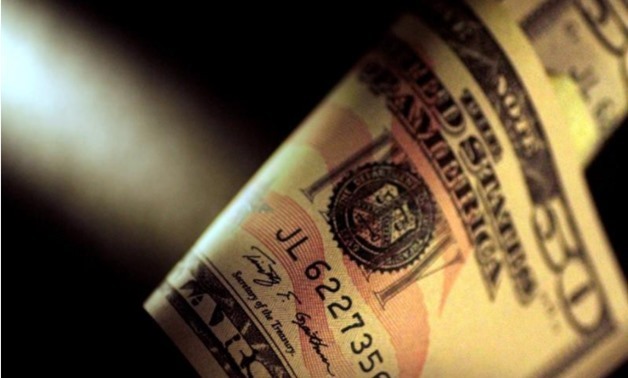
A U.S. Dollar note is seen in this June 22, 2017 illustration photo - REUTERS/Thomas White/Illustration/File Photo
LONDON - 29 August 2018: The dollar rose on Wednesday as relief about a U.S.-Mexico trade deal gave way to concern among investors that the conflict over trade between the U.S. and China was not about to end soon.
The greenback overnight had dipped to a four-week low as investors unwound safe-haven bets on the currency after the United States and Mexico agreed on Monday to overhaul NAFTA.
The U.S. currency has fallen for three consecutive weeks despite the United States embarking on greater monetary tightening than elsewhere.
That is partly because of political uncertainty in the U.S., reinforced by the criminal conviction of one of President Donald Trump’s ex-advisors last week and recent comments by the Federal Reserve’s chairman that seemed to suggest a slower pace of U.S. interest rate increases.
But the dollar index gained on Wednesday and at 0800 GMT was up 0.2 percent at 94.884. It traded as low as 94.434 during the previous session, its lowest since July 31.
“This deal [with Mexico] was more about making progress before the mid-term elections in the United States. Trump’s real fight will be with China,” said MUFG currency strategist Lee Hardman.
“We see reason for caution. The real fight is likely still ahead and it will not be long before investor attention shifts back to the more concerning conflict with China,” he added.
The deadline for public comment on U.S. President Donald Trump’s tariffs on another $200 billion of Chinese goods is on Sept. 5, with the new measures possibly taking effect later that month.
The euro, meanwhile, fell 0.2 percent to $1.1663, as worries mounted that Italy’s public deficit could exceed the European Union’s ceiling of 3 percent of gross domestic product.
It has risen against the greenback during the previous three sessions.
Italian headlines may keep euro-dollar rallies limited to $1.17-1.18 in the near term, said analysts at ING.
Short-term traders are shifting their focus to emerging market currencies as volatility for major currency pairs such as dollar/yen was low, said Masafumi Yamamoto, chief currency strategist at Mizuho Securities.
“Emerging market currencies like the Brazilian real, Turkish lira, Russian rouble and the South African rand may receive stronger pressures,” said Yamamoto.
Elsewhere the Swedish crown edged down towards a nine-year low versus the euro on signals that no interest rate rises can be expected until next year.
China’s offshore yuan was down 0.3 percent at 6.8240 yuan per dollar, after the central bank announced fresh steps on Friday to stabilise the currency.

Comments
Leave a Comment